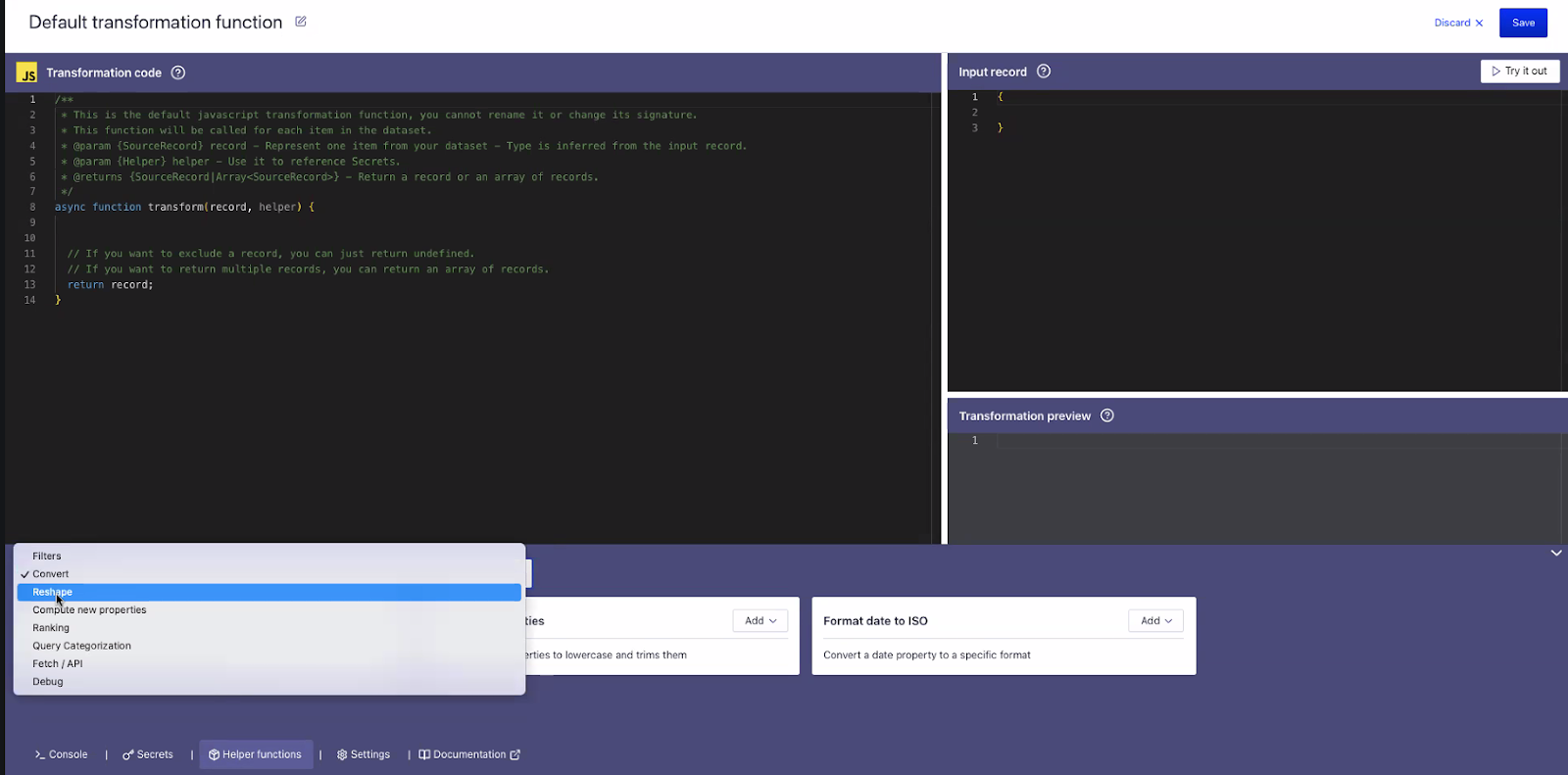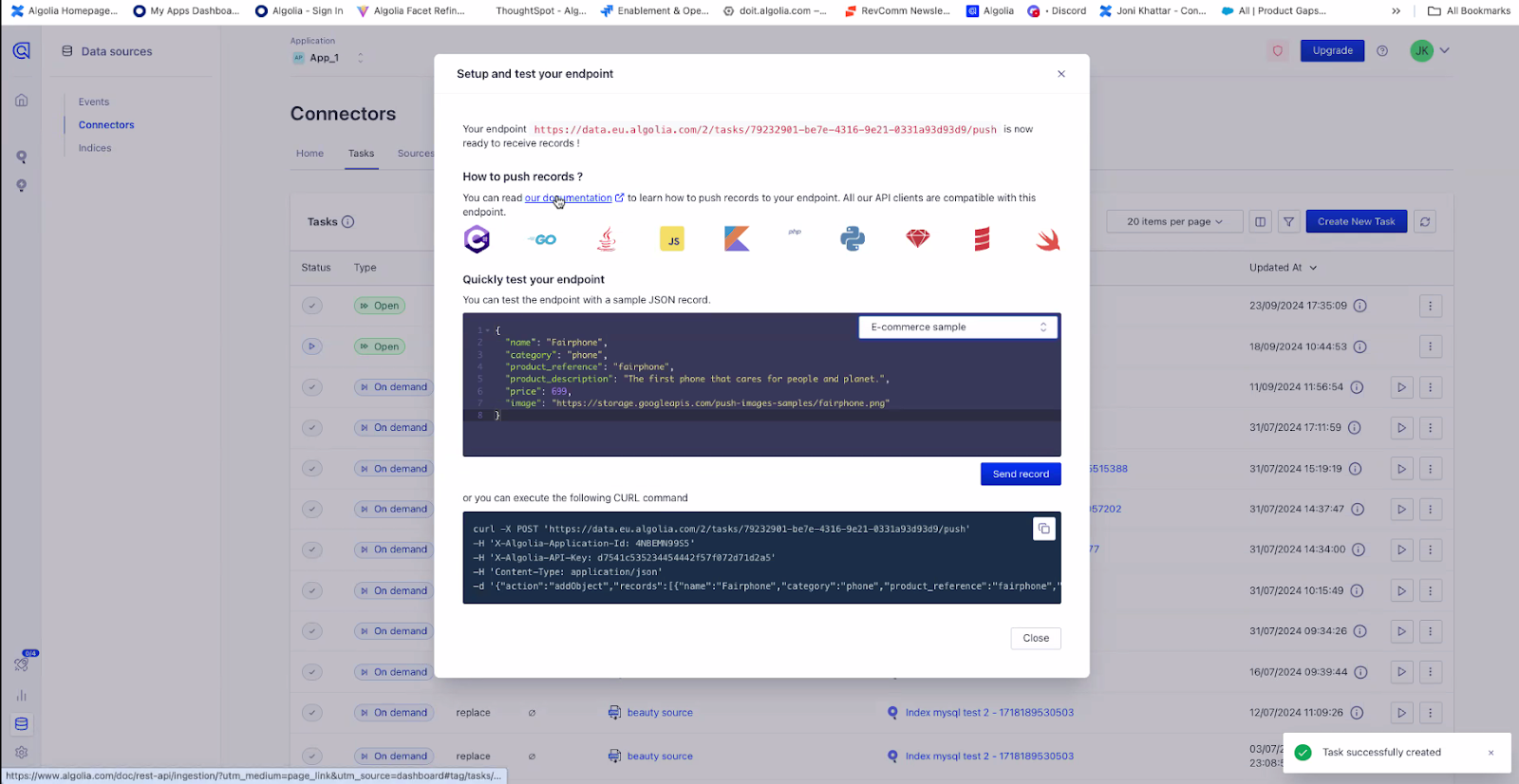Data is the fuel for Algolia’s AI cutting edge capabilities. To fuel ‘the machine,’ we are empowering our customers with innovative ways to pull that data in and manipulate it to get the most out of the search experience. At the end of the business day, this drives revenue.
Most customers need to transform their data before ingestion, and some struggle to move past this stage. Many organizations face challenges formatting their data optimally for AI and search, which can delay implementation and limit the use of advanced features. The new Data Transformation feature solves these issues and helps you get the most out of your data to fuel Algolia’s AI power. Transform, clean, and manipulate data during ingestion with built-in tooling that makes data ingestion easy. This is simplified data preparation to power your search.
Let’s Look at the use cases
Transformations can be done at a record level and both before and after indexing. You can now add attributes such as tags, categories, and labels. And yes, you can also remove attributes if you wish. Does this sound like an ETL tool? Well, it sort of is, but built directly into your Algolia Developer toolkit. To me, the coolest capability is now you can convert a flat list of categories into a hierarchical structure. Yes! The classic developer build of taking a flat file and creating a multidimensional structure, such as hierarchies and categories–consider how this sets the stage for creating categories to leverage for Query Categorization. Here are more things the cool kids using Data Transformation can perform:
-
Filtering records
-
Normalize the attributes, i.e., all lowercase
-
Computing discount percentages, or any calculation required between multiple attributes
-
Changing data types
-
Gravity/Decay score Model
-
Category weighting value
How easy is it to get started?
You can access Data Transformation directly from your dashboard. Go to Data Sources/Connectors and then “Configure your data sources.” Next, connect to a data source and then get started in the code editor. It is that easy.
The editor comes with several pre-built transformation helper functions for common use cases. The code editor seen below comes with autocomplete, sampling, and debugging capabilities and includes options to write and maintain custom transformation functions–your own magic. Algolia makes it easy for you to utilize transformations for Data Connector and API Client Traffic. As alluded to above, you can write transformations utilizing the destination data, i.e., the index itself (post indexing transformations).

What you will experience
-
Quicker setup: Prepare your data more efficiently for Algolia ingestion
-
Easier data formatting: Use pre-built functions for tasks like creating hierarchical categories or custom ranking
-
More flexibility: Create and reuse custom transformation functions as needed
-
Less reliance on support: Handle more data preparation tasks independently
-
Better use of features: Format data more easily for advanced Algolia capabilities
-
Improved data readiness: Ensure your data is well-structured for effective search and discovery

Go ahead and give Data Transformations a go. Below are some links to guide you through the DT start. As always, your Algolia team is here to help you every step of the way. Go transform your search experience with Algolia’s new Data Transformation capabilities.
AI Search
The results users need to seeAI Browse
Category and collection pages built by AIAI Recommendations
Suggestions anywhere in the user journeyAdvanced Personalization
Tailored experiences drive profitabilityMerchandising Studio
Data-enhanced customer experiences, without codeAnalytics
All your insights in one dashboardUI Components
Pre-built components for custom journeys






